Wolf Richter wolfstreet.com, http://www.amazon.com/author/wolfrichter
Despite “the lowest interest rates in more than a year.”
In California, the median house price in March was essentially flat with March last year at $565,880, according to the California Association of Realtorstoday. But among the most expensive 16 coastal counties – those with a median price for a single-family house above $500,000 – there were only four counties where house prices ticked up compared to March last year: Napa +3.6%, Santa Cruz +0.9%, San Luis Obispo +3.2%, and Ventura +0.2%. In the other 12 counties, prices fell year-over-year. This year’s widespread decline in expensive counties is the first such event since the end of Housing Bust 1.
Despite “the lowest interest rates in more than a year,” sales volume in California dropped 6.3% in March, compared to March last year, to a seasonally adjusted annualized rate of 397,210 houses, according to the CAR.
Sales volume in March dropped in all major regions from a year ago (not seasonally adjusted), with single-digit declines in the Central Coast and Central Valley regions and double-digit declines in these regions:
- Nine-county San Francisco Bay Area: -10.8%, including a 27% plunge in Napa and a 20.4% plunge in Sonoma.
- Los Angeles Metro: -12%, topping out with a 15.4% decline in Ventura.
- Inland Empire region: -10.4%, with Riverside -9.3% and San Bernardino -12.2%.
And the median price has begun following volume. Especially in the Bay Area, median prices tend to rise sharply in the spring from the lows of January due to seasonal factors. But comparing prices from March this year to March last year eliminates the seasonal factors. Also note: “median price” means half the sales prices were above the median price, and half were below the median price. But the price range can be very wide.
Counties of the San Francisco Bay Area
Eight of the nine counties of the San Francisco Bay Area qualify for the “most expensive” label, with a median house price above $500,000: The counties of San Francisco, San Mateo and Santa Clara (Silicon Valley), Alameda and Contra Costa (East Bay), and in the North Bay, Marin, Napa and Sonoma. Only Solano County falls below it, with a median price of $438,500 (-1.5% year-over-year). So here are the eight counties, in order of median price in March 2019:
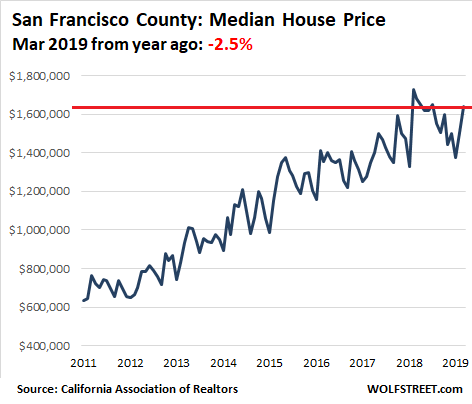
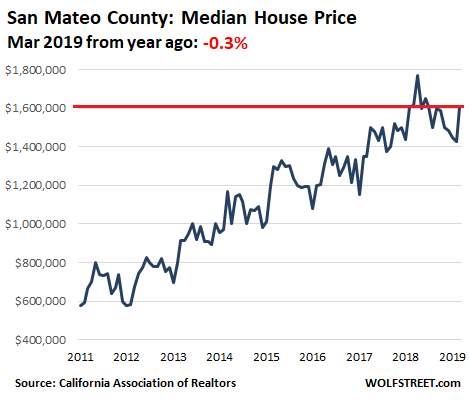
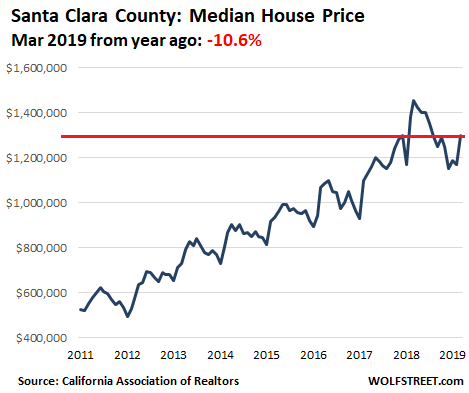
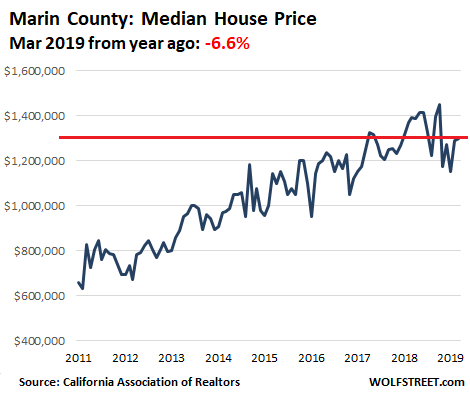
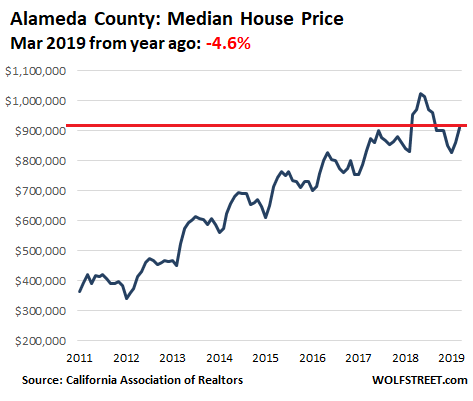
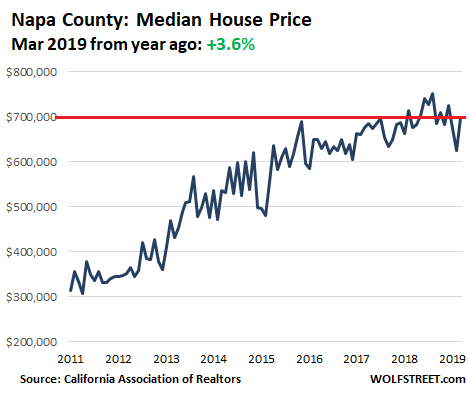
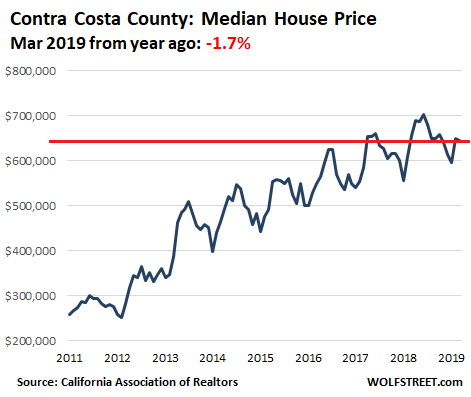
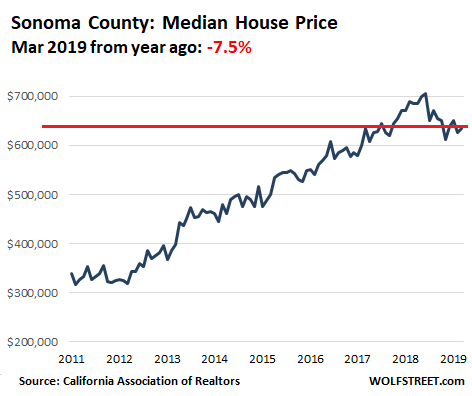
Southern California
Four of the six counties of Southern California qualify for the “most expensive” label with a median price above $500,000: The counties of Los Angeles, Orange, San Diego, and Ventura. The median house prices in Riverside and San Bernardino, at $412,000 and $309,000 respectively, missed the cut-off point. Los Angeles is a huge and diverse county, with a very wide range of home prices that include some of the most expensive properties in the world. But the median price means that half of the homes sold for more and half for less, and in a vast and very diverse market like this, the relatively few very pricey homes don’t move the needle much.
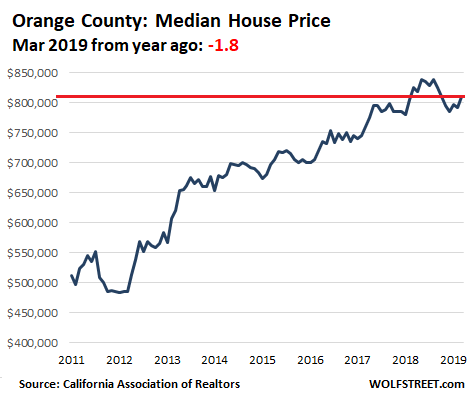
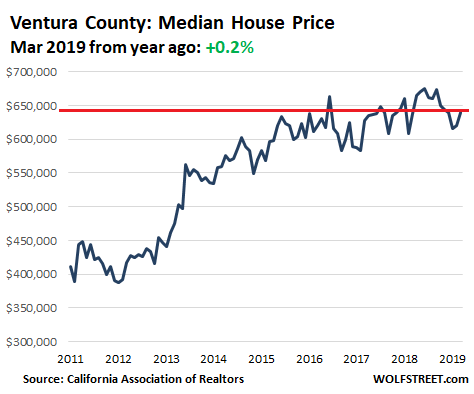
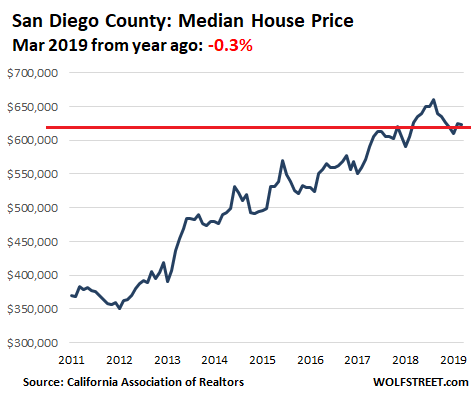
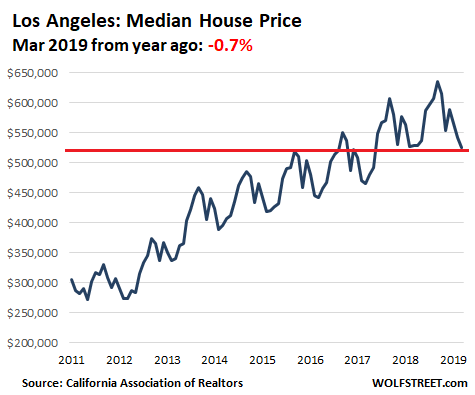
Central Coast
This long stretch of the beautiful California cost between the San Francisco Bay Area and Southern California is comprised of four counties: Santa Cruz, Monterey, San Luis Obispo, and Santa Barbara. All of them qualify for the “most expensive” label.
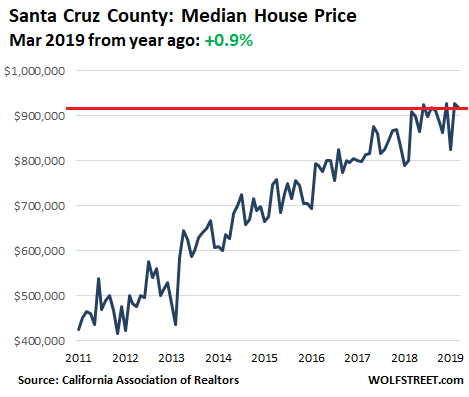
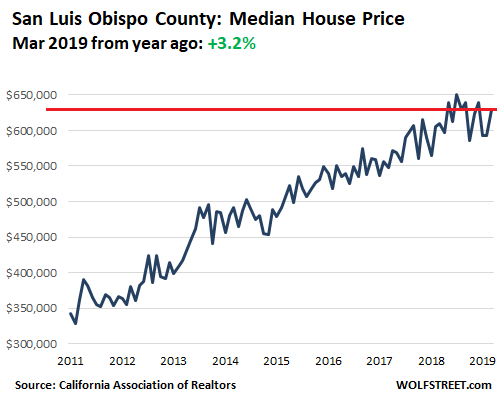
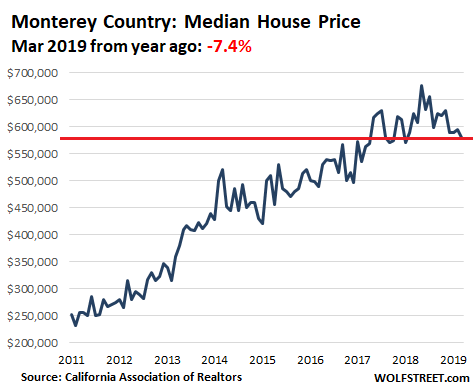
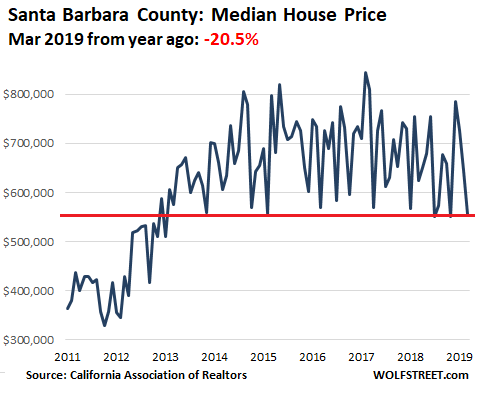
So what does this mean?
As the super-volatile chart of Santa Barbara shows, median prices can be noisy, and turning points are not always easy to see. But beyond the ups and downs: Most of the counties on his list have seen a blistering house price boom over the past seven years, and 2019 is the first time since Housing Bust 1 that in many of the most expensive counties, house prices have declined year over year. That’s what this means. It’s not a collapse. But it looks like a turning point.